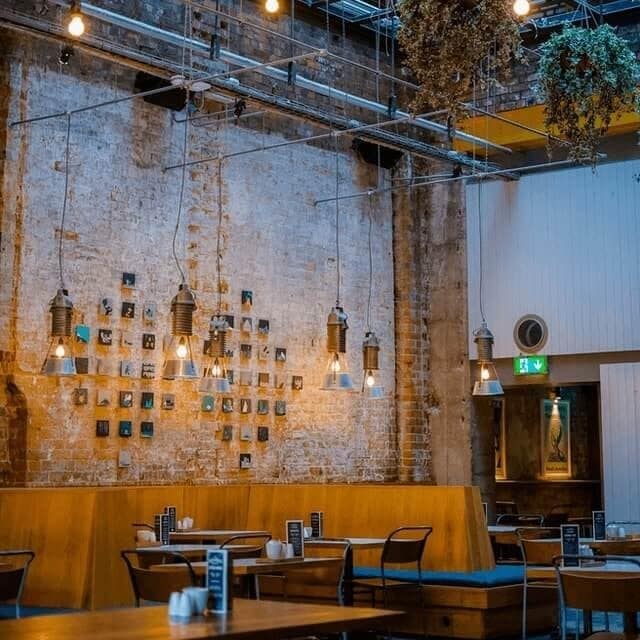The impact of COVID
Today, in the midst of the COVID-19 epidemic, setting fair prices has become tougher than ever. If you’re like most restaurant owners, you are probably struggling to provide the kinds of wholesome, delicious food that your customers are used to, without raising your prices. That’s because your costs seem to be skyrocketing. Food prices have gone up in most parts of the country. And at the same time, restaurants are spending more on vital health and safety products like masks, gloves, and professional quality cleaning products. You’re also probably spending money to install plexiglass barriers inside your dining room, train your staff in the new social distancing protocols, and make sure that you pay employees who are staying home while they have symptoms of illness. All of that spending adds up quickly.
At the same time, your customers might be dealing with their own economic hardships. Around the country, many people are tightening their belts as they cope with job losses, reduced wages, and other financial hardships. Your customers still want to enjoy a great meal in a fun environment, which is why they’d still like to visit your restaurant. But they might not want to buy expensive menu items or high-cost specialty drinks. You need to take all of this into account when you’re pricing your menu.
So, how can you make sure that your customers and your staff stay healthy, all while continuing to provide great food at a fair price? We’ve put together a list of tips for setting menu prices during COVID. Keep reading to hear some of our best ideas, so that you can keep offering great service to all of your customers.
Talk to your vendors
Sometimes, communication is the best way to make sure you’re really getting the best prices for the products that your restaurant needs. It’s a good idea to sit down with your vendors and negotiate the costs of all of the items that you buy from them. You’ll probably be surprised at how flexible many of them can be.
Whether you’re buying produce, meat, drinks, or non-food items, there is probably a certain amount of wiggle room in the pricing determined by your vendors. After all, it’s in your vendors’ best interest to cultivate a long-term relationship with them. That means that it’s also in their best interest to give you the best price that they possibly can. Changes are that if you meet with them and explain your circumstances, they’ll find a way to bring their prices down.
Just make sure that you are still getting high-quality products. Don’t be tempted to cut corners when it comes to food safety or when it comes to high-quality, professional cleaning products, especially at this time!

Do a comprehensive price-check on your menu
It sounds obvious, but sometimes we forget to really calculate the cost of each item on our menu. How much does it really cost you to prepare each item on your menu? How does that cost change if you buy items in bulk? This isn’t a one-time assessment; instead, it’s something you should be doing on a regular basis. Now, with COVID skewing all of your costs, it’s a great time to re-assess how much you’re paying for every one of your offerings.
Sit down and work out the cost of each possible meal, taking into account the new cost of each item. Again, make sure that you never compromise on food safety, or on professional cleaning products. Once you’ve assessed this, you’ll be in a great position to consider whether there are any items on the menu that you want to stop offering. This would also be a great time to meet with your vendors and talk about the possibility of adjusting costs.
Look into price elasticity
An item with an elastic demand is one which is very responsive to a change in price. In other words, it’s an item which customers may buy less of when prices go up. Usually, an item that’s elastic is also an item which is highly replaceable. For example, if the cost of pizza suddenly skyrockets, customers will probably buy much less of it – instead, they’ll start buying things like sandwiches, or paninis, for example.
On the other hand, some items are harder to replace. This means that customers will be much more willing to pay a high price for them. Trendy or fad food items might fall into this category; so might health foods, or luxury items.
It’s a good idea to assess the items on your menu to determine which are the most elastic. Those are the items which your customers probably won’t want to pay more for; you’ll have to either keep the price steady, or else remove those items from the menu. The more inelastic items on your menu, on the other hand, are the items where your customers are probably willing to stretch their budget and pay a little more. Those are the areas of your menu where you can charge a higher price.

Rethink the less popular items on your menu
Every restaurant in the world has certain items which are a little less popular than others. This doesn’t mean that the items aren’t good in their own right; maybe they’re seasonal items, or maybe they cater to a particular taste. But for whatever reason, these particular items are just not very popular with most of your customers. They might be even less popular now than at other times. These days, many customers are looking for familiar foods that they already know and love.
This is a great time to go through your menu and cull some of the less popular items – especially if those items are expensive to prepare. Meals involving costly cuts of meat, or expensive luxury ingredients, may not be the right items to feature on your menu right now. These are risky offerings at the best of times, and they’re riskier than ever now.
Your customers are tightening their belts and are being careful with their spending. They still want to go out to restaurants and enjoy the fun of a night out on the town, but they are probably not willing to spend a lot of money on luxury foods. That’s why this is a good time to overhaul your menu with an eye to offering popular, relatively low-cost meals that will make your customers happy.
Check out the competition
You’re probably not the only restaurant in your area – so why don’t you take a look at how your competitors are doing? What do their menus look like these days? Have they raised their prices? Have they changed the items on their menus?
You don’t have to do exactly what the other restaurants do, of course. But you should get a sense of what they’re up to. That will help you to develop bench marks and goals for where you think your own business should be. Of course, studying the competition will also help you decide whether their strategies are working. You can learn from you competitors’ mistakes, just as you can learn from their successes.
Rewrite your menu, literally
Once you’re re-considered all of the costs and prices on your menu, it’s time to literally rewrite – and redesign – the menu itself. You’ll want to highlight your low-cost items. You’ll also want to display information about any deals that you’re offering. Make sure your customers are aware of all the changes that you’ve made.
Of course, you should also update your website, making sure that the menu changes are reflected there too. And you’ll probably want to use all of your social media platforms to alert your customers to the changes in your menu. In fact, you should be sending your customers pretty frequent updates and reminders about all of your deals and specials! Social media is a great way to communicate with your customers at all times.

Consider offering deals
As you look over your menu, you might discover that some items are still relatively low-cost for you to prepare. You might want to consider offering a deal on those items. Sometimes, charging a lower price on some items – especially desserts or appetizers – can tempt customers to visit your restaurant. Once there, your customers will probably be more willing to try out some of your other menu items.
Some restaurants also like to offer early bird specials, or discounts on certain food items at certain times of day. That can be a great way to get people into your restaurant at less popular times, like early evening or midafternoon.

Final thoughts
The restaurant industry is still one of the most important, valuable businesses in this country. Even in the midst of the COVID-19 epidemic, restaurants are still providing a great service. Now, more than ever, Americans want to enjoy the comfort of a great meal, eaten in a warm, comfortable atmosphere. Going to a restaurant can lift people’s spirits and cheer them up.
At the same time, restaurants are facing great challenges these days. Restaurant owners are facing sky-high costs, but are also expected to offer great food at reasonable prices. This isn’t easy! Hopefully, our tips will make it easier for you to rethink your menu so that you can continue to provide wonderful meals to your customers, all while staying within your own budget.